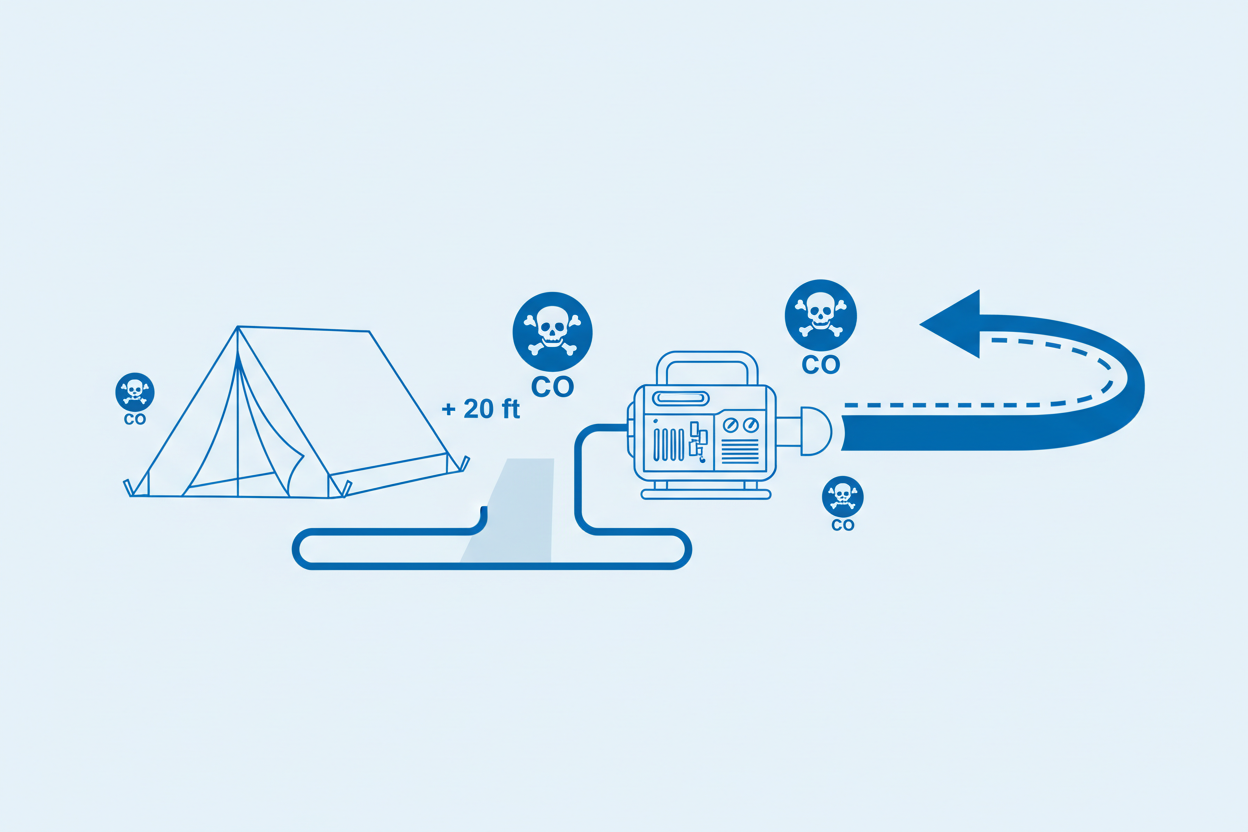Camping Generator Safety Tips Every Camper Should Know
Camping generators provide convenient power for lights, coolers, and cooking equipment. Safe operation prevents carbon monoxide exposure, fire hazards, and electrical risks.
Following clear safety guidelines ensures a secure and enjoyable outdoor experience.

Essential Camping Generator Safety Rules
Safety begins with proper distance, ventilation, and equipment handling. Campers should always operate generators outdoors and away from enclosed spaces.
- Place generator at least fifteen to twenty-five feet from tents.
- Point exhaust away from sleeping areas and vehicles.
- Never operate a generator inside a tent, RV, or shelter.
Carbon Monoxide Protection
Carbon monoxide is odorless and dangerous. Generators must run in open, well-ventilated areas at all times.
Distance and airflow prevent CO buildup near sleeping zones and vehicles.
- Keep generators downwind of the campsite.
- Avoid tree wells or partially enclosed spaces.
- Install portable CO detectors inside tents or rooftop tents.
Fuel Storage and Handling
Safe fuel handling reduces fire risks. Gasoline and propane must be stored away from heat sources and open flames.
Spill-free transport containers help prevent campsite hazards.
- Store fuel in approved containers only.
- Keep fuel ten feet from the generator during operation.
- Refuel only when the generator is cool.
Electrical Cord Safety
Proper cables ensure safe and reliable power delivery across the campsite. Outdoor-rated cords resist abrasion and moisture.
Avoid coiling cords tightly to prevent heat buildup during operation.
- Use grounded, outdoor-rated extension cords.
- Route cords away from walkways and cooking areas.
- Inspect connectors for wear before each trip.
Weather and Environmental Awareness
Generators must remain dry to prevent electrical hazards. Elevated platforms help protect units during storms.
Campers should monitor weather and protect generators with open-sided covers.
- Never operate generators in standing water.
- Use canopy shelters that allow full ventilation.
- Lift generators on blocks during heavy rain.
Load Management for Safe Operation
Overloading increases heat, stress, and electrical risk. Matching wattage demand to generator capacity ensures stable performance.
Staggering high-draw devices helps prevent overload shutdowns.
- Run kettles, coffee makers, or burners one at a time.
- Let coolers stabilize before using pumps or heaters.
- Keep total running watts under seventy percent of rated output.
Fire Prevention in Campgrounds
Hot engine surfaces can ignite dry grass or leaves. Clear vegetation from the generator’s resting area before starting.
Proper placement prevents accidental contact with flammable materials.
- Use bare dirt or gravel pads for operation.
- Keep gear and fuel away from exhaust paths.
- Carry a small extinguisher when possible.
Conclusion
Safe generator use ensures quiet, reliable power without risk to campers or equipment. With proper distance, fuel care, cord management, and ventilation, campers enjoy comfortable and safe outdoor power.
Prioritizing safety allows for worry-free camping with modern electrical convenience.
